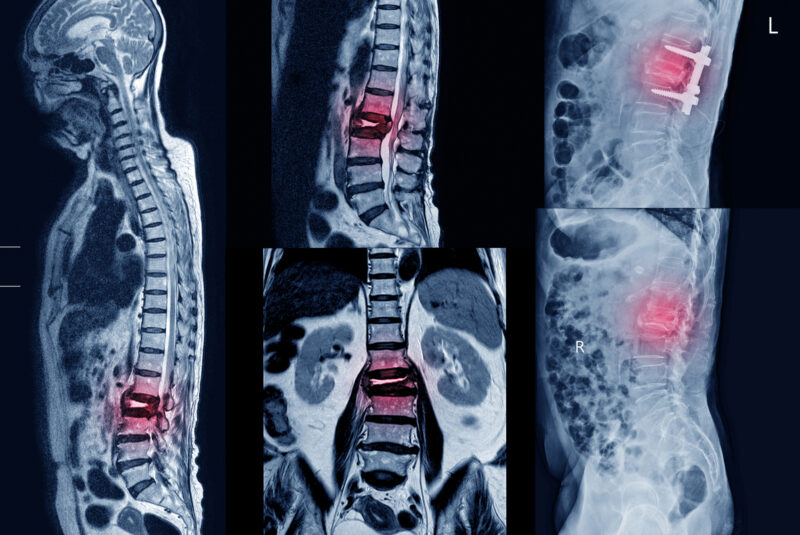The spine is the core of the human body. If you suffer from severe spine pain, you’ll have to do whatever it takes to recover as quickly as you can.
Sometimes, surgery tends to be a necessity for many people who put off their spinal issues for considerable amounts of time.
One form of this surgery is spinal fusion.
Are you considering a spinal fusion? A surgeon may recommend spinal fusion to relieve pain and restore a person’s ability to perform day-to-day activities.
Only you and your doctor can decide if this operation is right for you.
What happens during spinal fusion surgery?
Spinal fusion is a welding process that essentially fuses vertebrae together into a single bone.
Doctors will recommend this type of surgery when they know exactly where the source of your pain is.
Spinal fusion may be used to treat:
- Spinal stenosis
- Degenerative disk disease
- Spondylolisthesis
- Scoliosis
- Tumor
- Infection
Spinal fusion eliminates motion between vertebrae, ultimately alleviating the pain.
With that, there will be a slight loss of spinal flexibility, which is a minor trade-off for an extremely necessary procedure.
What Conditions Can Be Treated With Spinal Fusion?
Various conditions can be improved with a spinal fusion. If you have pain in the lower back, a doctor will attempt to determine the source of the condition.
Your doctor may order an imaging test such as an X-ray, CT scan or MRI scan.
Some of the conditions treated by a spinal fusion are:
- Fractures
- Degenerative disc diseases
- Infections
- Tumors
- Spinal Stenosis – abnormal narrowing of the spinal canal
- Scoliosis – abnormal curvature of the spine
What Types of Procedures Are Available?
Surgery may be open, or it may be minimally invasive. A surgeon may perform the operation through an incision in the abdomen, in the side of the body, or in the back.
Minimally invasive procedures involve smaller incisions and shorter recovery times.
A bone graft is required in all types of spinal fusions. During the graft, small pieces of bone are placed between the vertebrae.
The bone for the graft may be taken from the patient’s hip or from a cadaver bone.
Manufactured or artificial materials are sometimes used instead of bone.
How does spinal fusion surgery work?
Spinal fusions stabilize the spine. During surgery, vertebrae are fused with a bone graft.
The affected vertebrae heal into a single unit. In addition to relieving pain, a fusion prevents abnormal movement of the bones.
It may prevent nerves, ligaments and muscles from stretching.
There are several variations of the surgery. No matter which type of procedure is chosen, they all have a few things in common:
- Bone is grafted to problem vertebrae.
- After surgery, the bone graft grows and connects the vertebrae.
- The fusion stops the vertebrae movement that caused pain.
The doctor will approach your spine from either the front or the back and insert a bone graft in between the vertebrae. This facilitates the fusion.
Bone grafts help the vertebrae heal together into one bone, and there are several different artificial bone graft materials that are widely used today including:
- Demineralized bone matrices (DBMs), which are cadaver bones with the calcium removed. This causes the bone to be changed into a gel-like substance, and DBMs are used many times with other grafts.
- Other synthetic bone-forming proteins that help with spinal fusion are called bone morphogenetic proteins. These are FDA-approved only under certain circumstances.
- Another common bone graft material is ceramics, which have a similar shape and consistency to real bone.
What Does Recovery Involve?
Recovery time varies depending on the type of procedure and a patient’s health. The graft may take several months to grow.
While healing, the spine needs to be immobilized. Some patients wear a back brace. Internal devices may be used to keep the graft in place.
For instance, plates, rods or screws may be implanted.
A doctor may recommend physical therapy to teach safer ways of moving during recovery and beyond.
How long is the recovery process after this surgery?
Following the bone grafting and spinal fusion procedure, immobilization is crucial to let the fusion happen and to allow the spine to properly align. Even afterwards, we usually recommend just light activity, like walking.
Every surgery will result in some pain, and that’s why it’s crucial to continually work with your doctor post-surgery to successfully facilitate the healing process.
Medication is sometimes a controversial aspect of the recovery, as opioids are commonly used to help manage pain.
The public health issues in the United States with opioids are a crucial epidemic, and alternative medications have become widely used in recent years.
Needless to say, this entire process requires a lot of endurance from the patient and trust in your doctor.
That’s why, when you are in the initial planning of a spinal fusion surgery, you are going to want to do your research and find the best doctor for you.
What Are the Complications From Spinal Fusion?
Spinal fusion is not a new type of surgery. Many decades of experience have tested the effectiveness and safety of the treatment.
Still, before any surgery, it’s important to discuss the potential complications of the procedure. Here are some of the possible side effects of a spinal fusion:
- Loss of flexibility – This is true for most patients, though the loss is considered minor.
- Infection – As with any surgery, there is a risk of infection.
- Pain at the surgery site – Some patients have experienced pain where the bones were grafted.
- Recurring symptoms – The original symptoms may recur after surgery.
- Nerve damage – During the operation, patients? nerves or blood vessels may be damaged.
- Blood clots – Blood clots in the legs may form.










